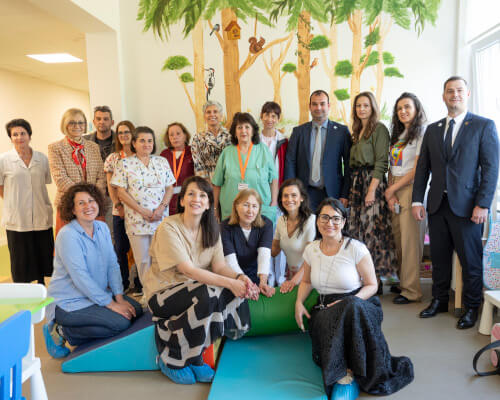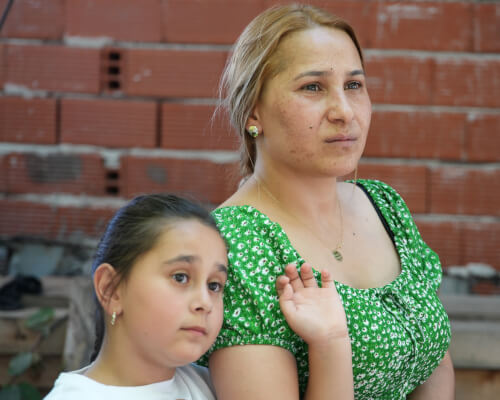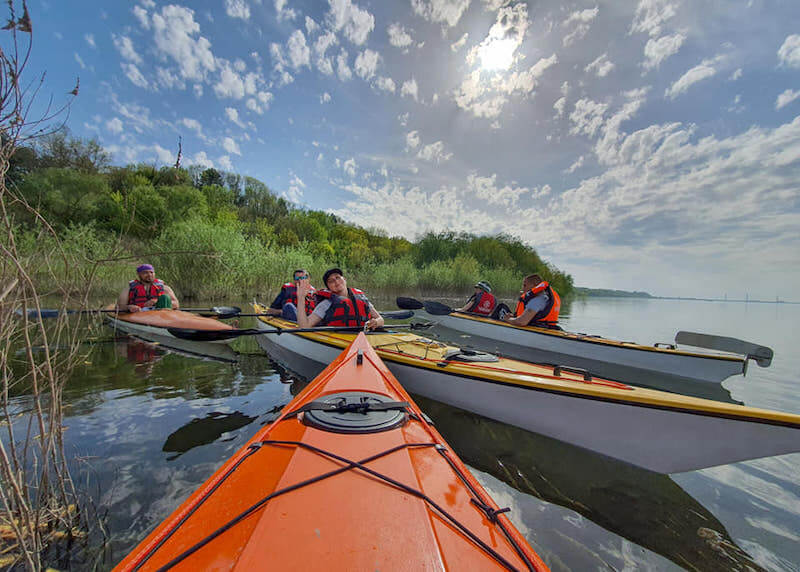
Of the world’s great rivers, the Danube might not be the longest, deepest, or most exotic. It doesn’t top any charts, except perhaps for the river running through the largest number of countries (ten to the Nile’s nine). Yet, its name is known the world over thanks to its lasting hold over popular culture: the river inspired one of the most recognizable pieces of music ever written, Johann Strauss’s “The Blue Danube Waltz,” entire painting and music styles, as well as books, movies, and culinary specialties.
The Danube is also an explorer’s heaven: the more you discover, the more there is to explore. Just when you think you have gotten to know it, the river throws a marvelous surprise your way, particularly if you venture out of the grand cities and major natural parks. Both manmade and natural wonders await adventurers along the 2,850 km (1,770 miles) stretch of coastline from the Black Forest in Germany to Ukraine’s Black Sea coast, but for the river’s best-kept secrets you would have to visit its right bank in Bulgaria.
The Danube’s beauty is celebrated in the Bulgarian national anthem, and although far lesser known than “Blue Danube,” Bulgarian composer Diko Iliev’s “Danube Horo” is a fitting tribute to the river’s grandness. (Play it at your own risk: the piece may cause an uncontrollable urge to break into dance!)
Ancient and medieval fortresses, “mad” forests, reedy lagoons teeming with wildlife, haunting monuments to socialist urban planning, Europe’s oldest rock monasteries, kayaking expeditions, charming guesthouses, tucked-away museums—the Danube’s Bulgarian stretch offers that and much more.
You can even see the coastline through the eyes of a prehistoric hunter-gatherer!
Recognizing the region’s potential, in 2020 and 2021, the America for Bulgaria Foundation invested nearly half a million levs in local initiatives promoting natural and cultural heritage tourism in the country’s Danube basin. Some of the initiatives are already underway, so why not spend a part of your summer along the banks of the “Danube so bright and blue”?
Vidin
Bulgaria’s northwesternmost city, Vidin, boasts centuries of history: it was in turn an ancient Celtic settlement, a fortified Roman town, one of the main cities in the medieval Bulgarian state, and the center of Osman Pazvantoglu’s breakaway state at the end of the eighteenth century.
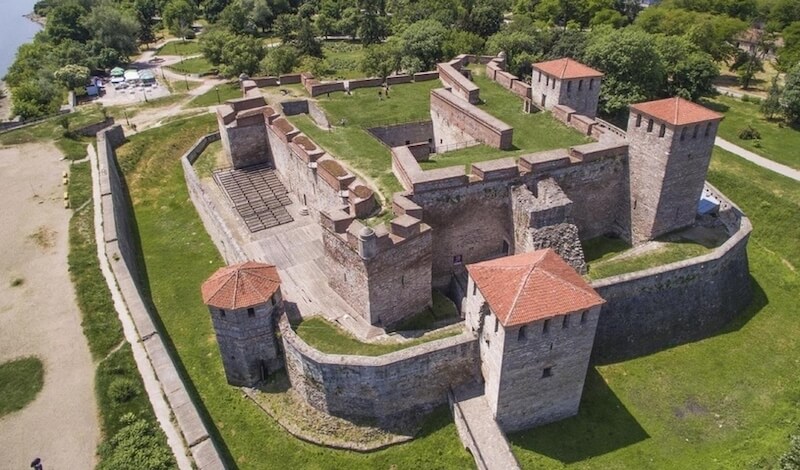
Nowadays, the city is home to Bulgaria’s best-preserved medieval fortress, Baba Vida, Pazvantoglu’s mosque and library, many old Orthodox churches, the Vidin Synagogue, and a number of grand nineteenth- and twentieth-century residences.
To make the most of your visit, pick up a guide from the Regional History Museum in Vidin and follow one of the suggested routes, or hire an escorted tour.
You can also explore Vidin and its environs by boat. Happy Charter offers a number of routes that will give you a unique vantage point for viewing popular sites such as the Baba Vida Fortress and New Europe Bridge and help you discover places known only to locals such as Naked Island. Visitors can also take waterskiing, wakeboarding, and yachting classes.
Belogradchik
Just over 50 km (30 miles) south of Vidin is the town of Belogradchik, of wondrous rock and fortress fame. For a bird’s-eye view of the Belogradchik Rocks and the ancient Kaleto Fortress (also known as Belogradchik Fortress), as well as Vidin’s major sights, rent a hot-air balloon ride with Adventure Center Belogradchik. Mark your calendar: Bulgaria’s first ever balloon festival will take place on September 18–22 this year, in Belogradchik and Vidin.
Oryahovo
Beautiful turn-of-the-century architecture in downtown Oryahovo bears witness to the town’s commercial and cultural importance at the end of the nineteenth and early twentieth century. Your exploration of this Danubian gem of a town won’t be complete without a visit to the Oryahovo History Museum. There you will learn about the town’s beginnings in Antiquity and its transformations over the centuries. Through the museum’s Echo of the Centuries initiative, you will get a taste of medieval life in the area: guided archery practice is offered to visitors to the Rock, a medieval fortress managed by the museum.
To learn about the life and work of one of Bulgaria’s most beloved composers, be sure to pay a visit to the Diko Iliev Museum, which is a part of the Oryahovo History Museum complex.
And while you are exploring the museum’s many treasures, purchase a copy of the book Window to Goodwill for a glimpse into Bulgaria’s long, proud history of philanthropy. Proceeds from the book sale support local initiatives through the Oryahovo Public Donation Fund.
Nikopol
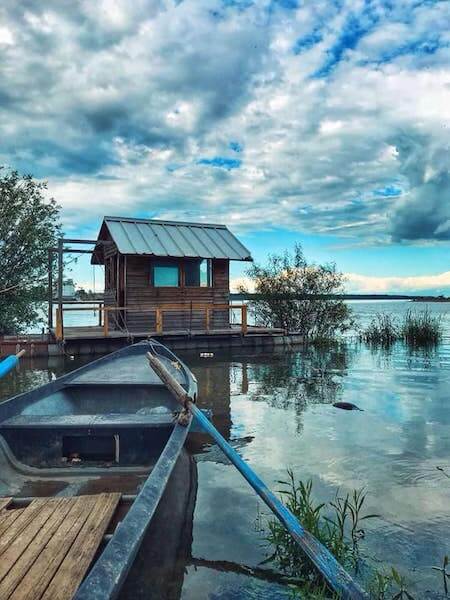
Despite its diminutive size, the town of Nikopol boasts a proud name and a rich history. “The City of Victory” (from Greek) has been a meeting point for Thracians, Greeks, Romans, Bulgarians, Slavs, Ottomans, and many others over the centuries. In the 1396 Battle of Nicopolis, it became the site of the last large-scale crusade of the Middle Ages.
Be sure to visit the medieval fortress and beautiful churches built in the style predominant during the Second Bulgarian Kingdom, in the thirteenth and fourteenth centuries. The Fountain of Elijah, set in a tombstone and immortalizing the love of Fronton, a second-century Roman clerk, for his late wife, Elijah, is a must-see as well. Seventeen centuries later, the inscription Fronton dedicated to his wife moved French explorer Dijardin so much he had a second, equally touching inscription made.
For a truly authentic experience, discover Nikopol through the eyes of a fisherman by booking a fishing and sightseeing tour with one of the skilled guides from the Amour Nikopol Association. In addition to learning about one of the oldest trades in the world, you will get an insider’s tour of nearby islands and the only river-facing rock church in Bulgaria.
The Amour Nikopol Association teamed up with the local chitalishte (community center) to organize a Danube food and crafts festival over the weekend of July 16–18. So, save the date and set your GPS destination to “Nikopol.”
Fancy becoming Indiana Jones for a day and embark on a search of lost ancient worlds? An hour’s drive from Nikopol are the remains of the ancient Roman city of Ulpia Oescus, an important Roman economic and cultural center in the second and third centuries, said to have been visited by Emperor Constantine himself.
Belene
Belene is a place of many contrasts. Alongside lush natural habitats swarming with wildlife are grim reminders of unrealized industrial projects and haunting tributes to communism’s repressive system. The town sits on the right bank of the Danube River facing Belene Island (also known as Persin Island), the largest island in Bulgarian waters and an important part of Persina Natural Park. The island is also home to the former Belene concentration camp for political prisoners during the communist dictatorship in the country.
Visitors can book a tour of the island through the Belene Island Foundation, an organization committed to preserving the memory of the victims of Bulgaria’s totalitarian regime and to transforming the town and its surroundings into a place of year-round tourism. Plan ahead and be sure to call at least a couple of days in advance.
Belene also boasts the first and only monument to Pope John Paul II in Bulgaria; the ruins of the ancient Dimum castrum fortress; two catholic churches, one of which is a cultural monument housing the sanctuary of Bishop Eugene Bossilkov, who was beatified by Pope John Paul II; and the Dimum neighborhood, with hundreds of abandoned apartments built for the workers of the never-constructed Belene nuclear power plant.
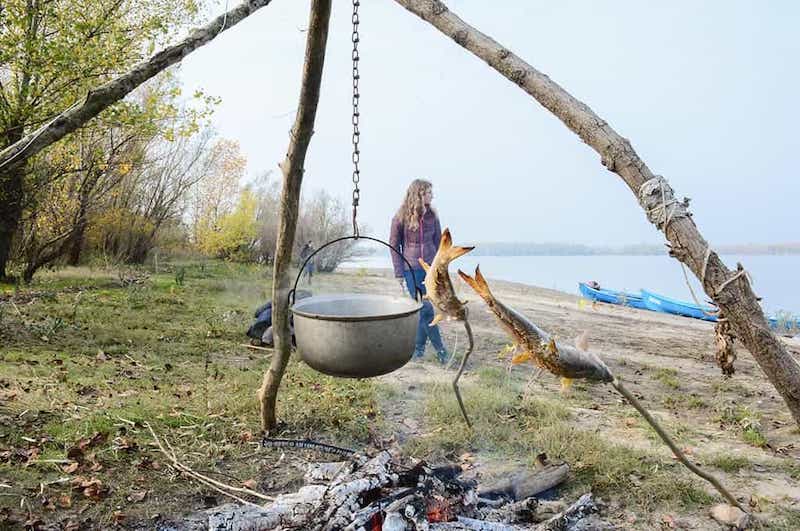
The town also hosts an annual summer school on memory for students of the recent past, organized by nonprofit Sofia Platform.
In the past few years, Belene Island has seen a rise in the Dalmatian pelican population after the birds had nearly disappeared. Due to the hard work of several organizations, there are now three colonies of the Dalmatian pelican nesting in the country. The first ever Dalmatian Pelican Festival on July 2–3 will celebrate the return of the pelicans to Belene Island.
Svishtov
Known primarily as the hometown of one of Bulgaria’s best-loved writers, Aleko Konstantinov, Svishtov provides opportunities for both culture and nature tourism. The Church of the Holy Trinity in town is a must-see and the work of another great Bulgarian master, the architect and builder Kolyu Ficheto.
Whether you are a literature, history, or architecture buff, or you are interested in the healing potential of the region’s thermal springs, Svishtov has something for everyone.
Kayak Club Svishtov is similarly versatile offering kayaking trips to nearby islands and towns such as Nikopol, kayaking classes, kayak and bike rentals, as well as walking tours of Svishtov. Don’t miss the trip to Vardim Island and the combined tour on the Danube and Yantra Rivers!
Svishtov is a great point from which to explore the whole central Danubian Plain.
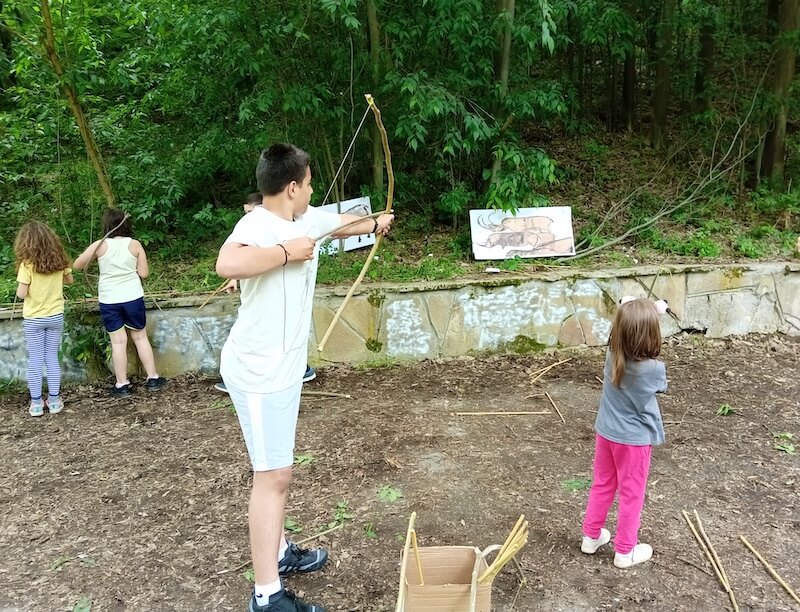
Ruse
Much can be said about and seen in Little Vienna, as the coastal city of Ruse is known among Bulgarians, but we will focus on two novel ways of experiencing this gem of a city.
Ruse was nineteenth-century Bulgaria’s main city, a flourishing commercial and cultural hub. Its economic importance cannot be overstated: the country’s first railway station was built here, and well into the twentieth century, it was the only city in Bulgaria with three train stations, Ruse River Station among them.
With the decline of passenger transport along the river in the past 30 years, however, River Station fell into disuse, driving people and businesses away from the area. The Kolektiv, a community organization dedicated to improving urban environments in Bulgaria, and students from Ruse vocational schools are working to change that. Keep an eye out for the installation that they are building and that will be inaugurated this fall: it will transform the River Station area into an attractive recreational zone ideal for taking photos, walking, resting, and learning about the history of Ruse.
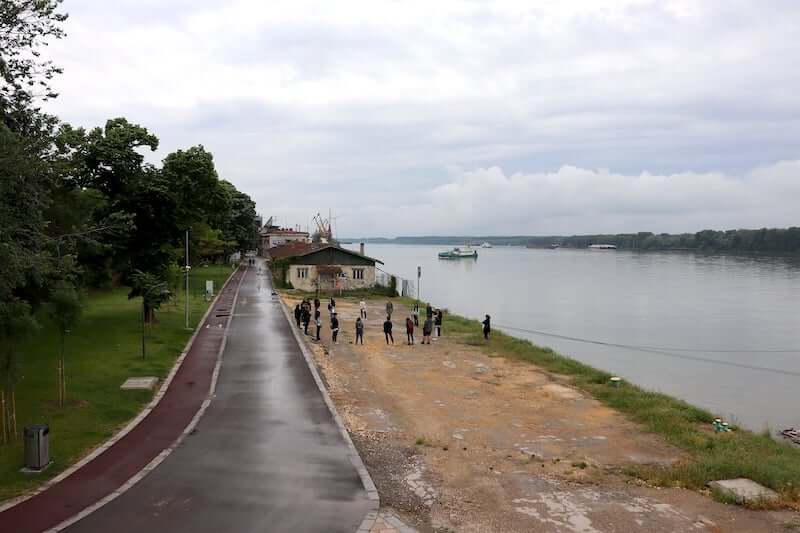
That history goes a long way back to a time when the islets and caverns in the area were inhabited by hunter-gatherers. Modern visitors to Ruse can experience what life was like for the ancients on the banks of the Danube by booking an eponymous tour with Prista Tourist Society. Participants will learn how prehistoric humans built shelter and protected their territory, hunted and fished, and prepared their food. They will also find out what the ancients believed in and how their art reflected those beliefs.
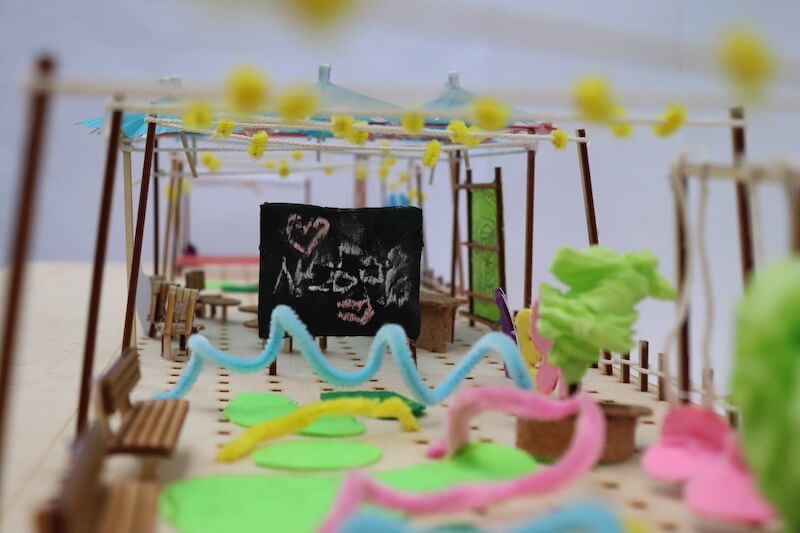
Tutrakan & the “Mad” Forest Area
Fishing is an important part of Tutrakan’s economy, and the town is famous for its historic Fisherman’s Quarter. Get to know the area by boat, on foot, and by bike by booking a tour with Danube Tours. The organization’s skillful guides will help you discover the region’s main sights, become acquainted with traditional arts and crafts, and sample local delicacies.
An insider’s tip: Stay out for the sunset; you won’t regret it! (Ask a local for the best sunset viewing point.)
While you are in the area, make a point of visiting the Sveshtari tomb with the mysterious stone ladies and hunt for treasures in Razgrad’s Abritus Archaeological Museum.
South of Tutrakan is a region known as Lugorogie, or Mad Forest, featuring picturesque villages, gentle undulating hills, and beautiful lakes and rivers (sadly, most of the forests were felled decades ago). To see the best of the area, book a weekend tour with Varna-based VeloWeekend.bg: the next one is on July 3–4.
Speaking of cycling, why not see the Danube’s entire Bulgarian stretch on two wheels? The Dunav Ultra route offers 740 km of cycling adventure and more than 100 natural and cultural sights. The Dunav Ultra app will guide explorers to the best places to stay and eat and all the natural and cultural sights worth exploring.
June 29 is Danube Day, so events will be scheduled in every coastal town. Check your local municipality’s event calendar to find out more.
